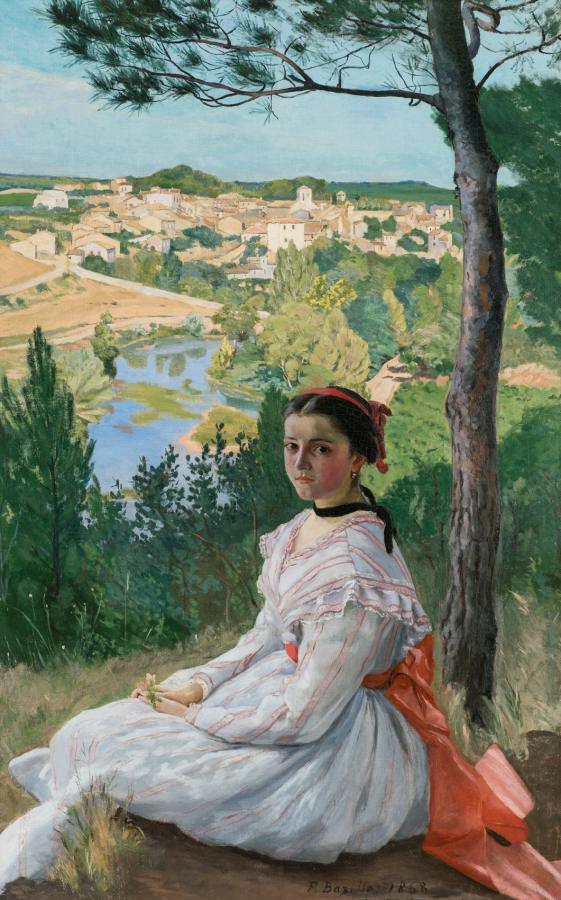Bazille, Frédéric (1841-1870)
Vue de village (View of the Village)
1868
Oil on canvas, 137.5 x 85.5 cm
Musée Fabre, Montpellier
Produced in Montpellier on the family property of Mas Méric overlooking the Lez and the village of Castelnau, the Village View is Bazille‘s first great success in his research to insert a human figure into a landscape. Hailed by the impressionist group, the painting was accepted at the Salon of 1869.
This masterpiece by Frédéric Bazille, one of the strong emblems of the Fabre museum, was created by the artist during the summer of 1868 during his stay in the Méric estate, on the outskirts of Montpellier. Bazille often posed his relatives in this summer residence: according to family tradition, he posed here the daughter of his parents’ Italian sharecropper, seated on the ground under an umbrella pine, against the light, having dressed for for the occasion a party dress of white muslin with fine pink stripes.
She looks seriously at the painter; below it, we can see the lazy meanders of the river Lez, and in the background, the village of Castelnau and the Romanesque bell tower of the Saint-Jean-Baptiste church. The refreshing shadow of the foreground with the intense greens of the vegetation, the cleverly calculated slide of the pine on the right magnify the urban landscape constructed in the light which already prefigures Paul Cézanne.
The painting is striking for its extraordinary luminosity and the splendor of the colored palette: the dazzling reds of the ribbon and the wide belt, the deep blacks of the hair, the choker, the cottony white of the dress worked in delicate glazes shine in this setting of greenery, ocher and faded blue. A firm and solid touch, which never gives in, as with Claude Monet, to the temptations of vagueness and imprecise, manages, almost miraculously, to restore the delicious sensations of the instant.
Berthe Morisot admired the work presented at the Salon of 1869 and wrote in laudatory terms to her sister Edma on May 5: “The great Bazile [sic] has done something that I find very good; it is a little girl in a very light dress sitting in the shade of a tree behind which we can see a village; there is a lot of light and sunshine. He seeks what we have so often sought: to put a figure in the open air and this time, he seems to me to have succeeded.» (FABRE)
